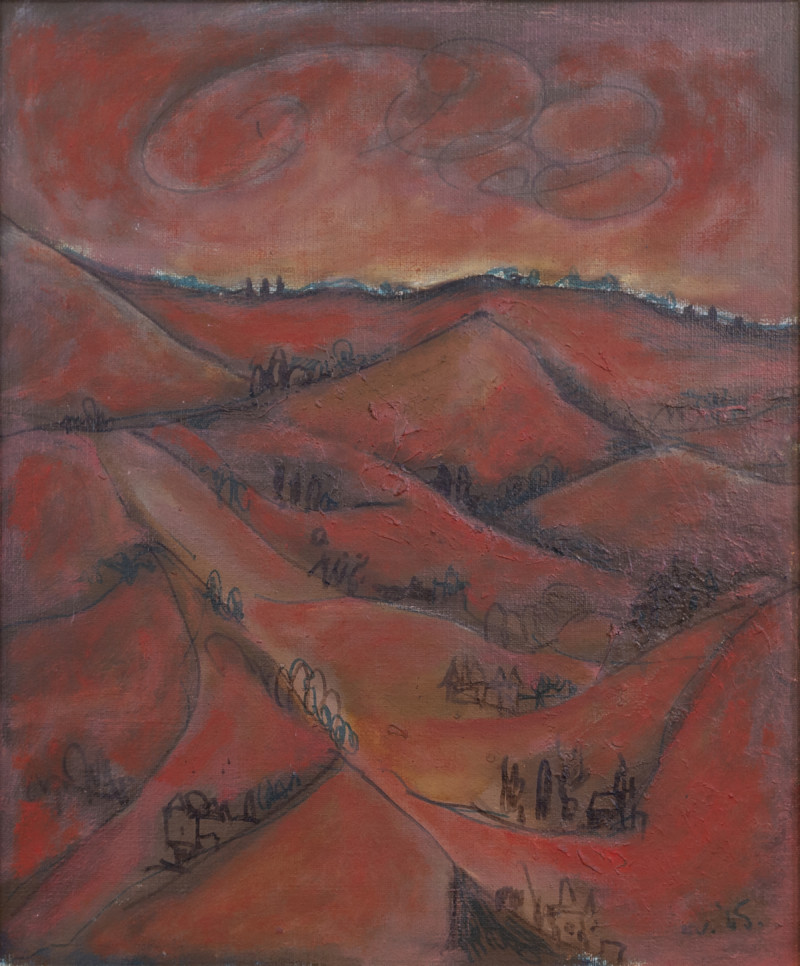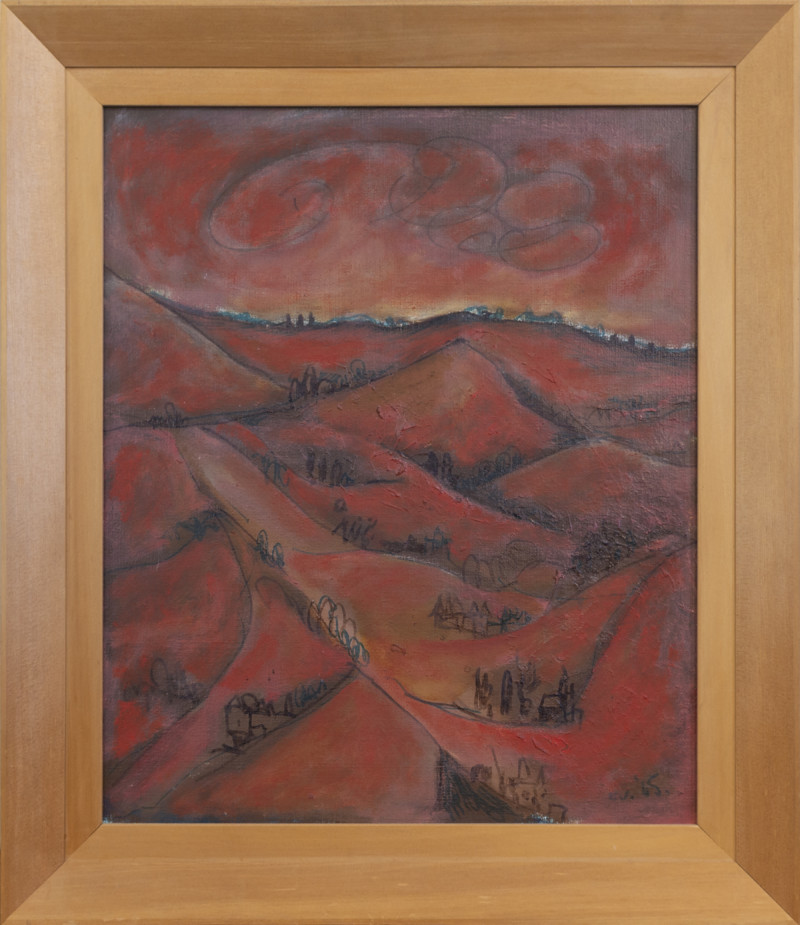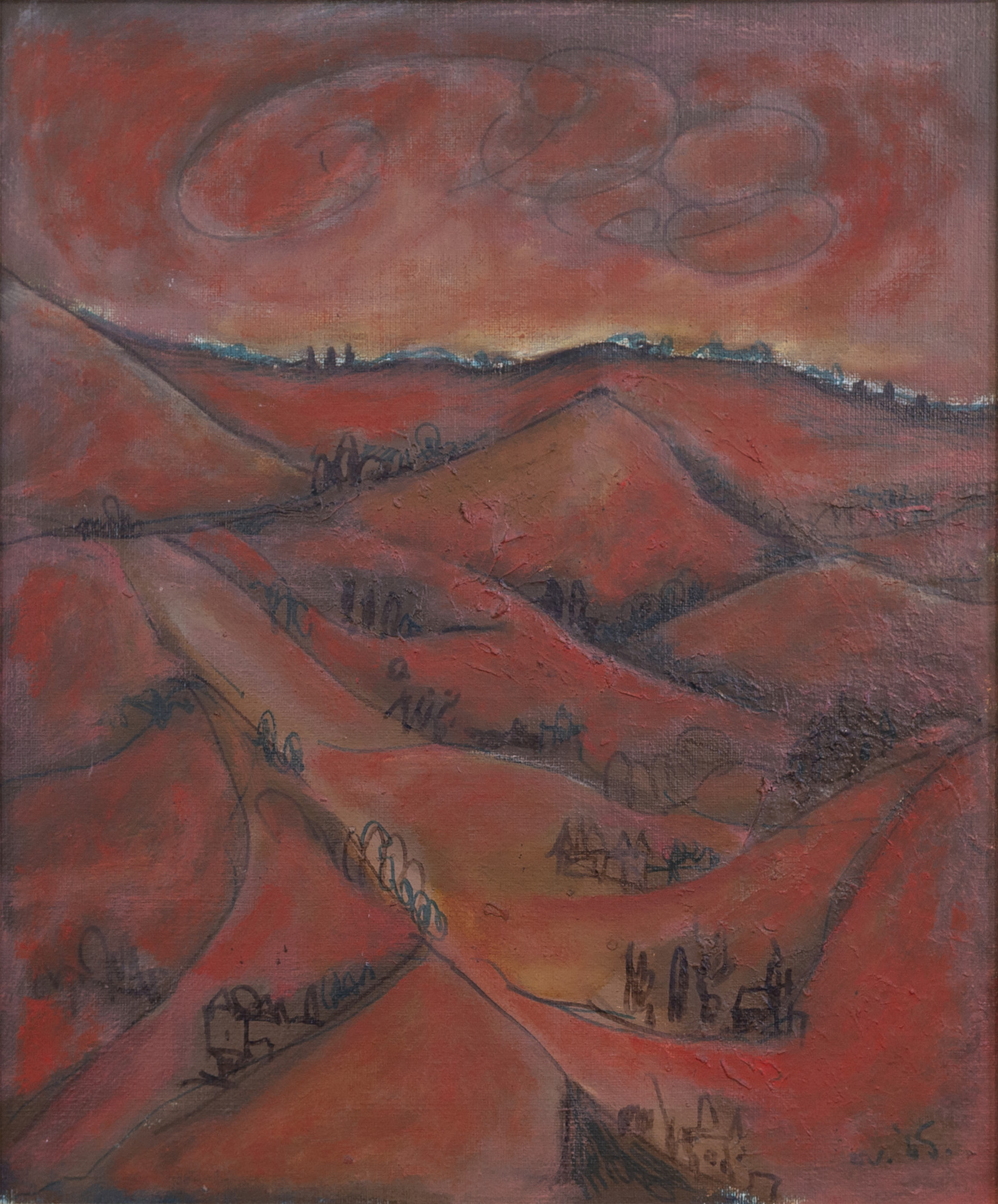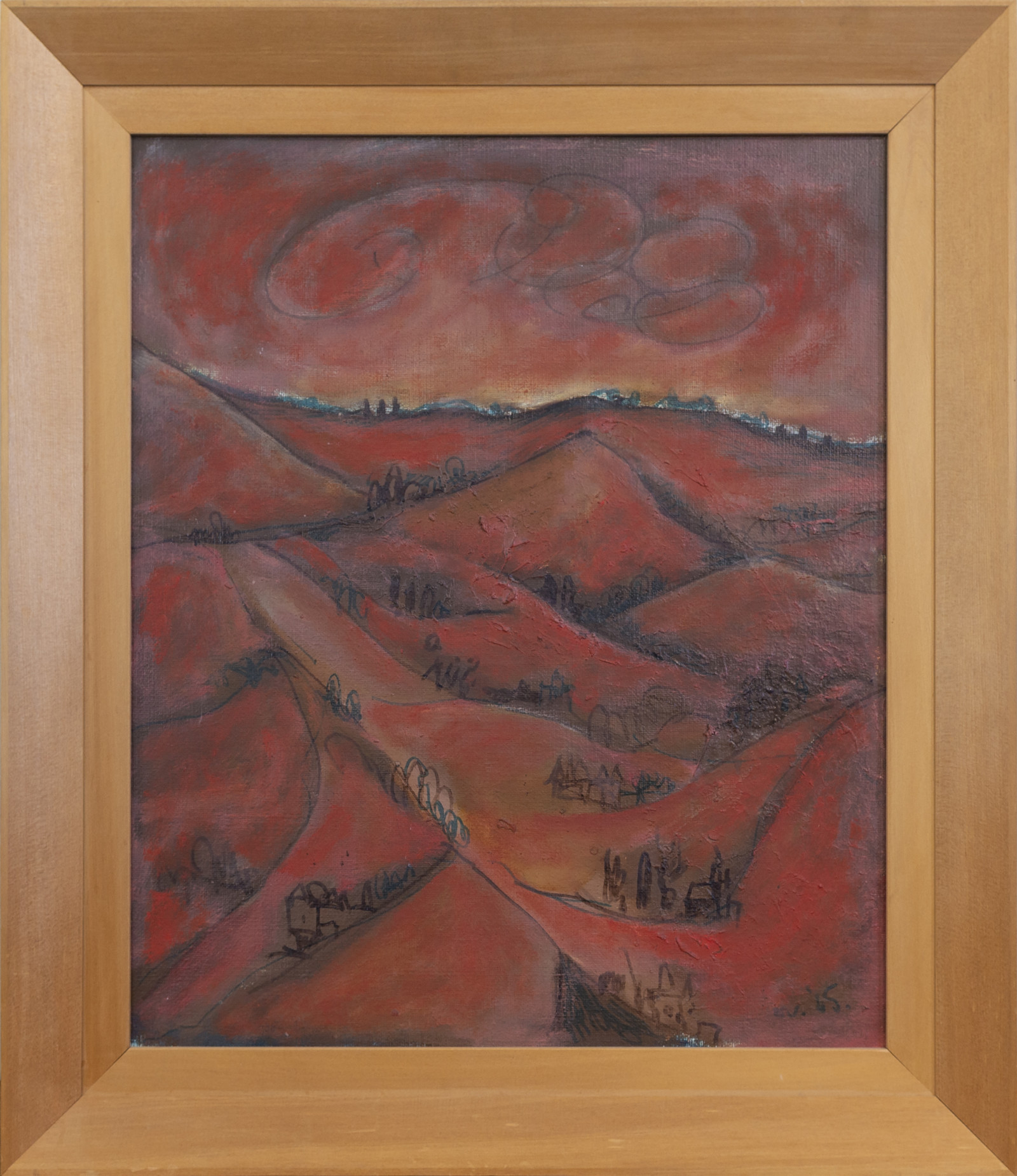MURU, Selwyn;
Porirua Hills
1965
Oil on board
590 x 490mm (image); 745 x 640mm (frame)


The following two texts were written for Te Huringa/Turning Points and reflect the curatorial approach taken for that exhibition.
Peter Shaw
Selwyn Muru was another of that generation of Māori artists who, influenced by Gordon Tovey at the Department of Education, trained as teachers. In this capacity, he lived at Ruatāhuna, Matakana Island, in Te Urewera, and at Papatoetoe, Tāmaki Makaurau. In 1963, the year in which he gave up teaching in order to concentrate on painting, he made an acclaimed artistic debut at an exhibition held by the Auckland Society of Arts.
This powerful landscape, drenched in dark red, evokes not so much the colours of a beautiful sunset but rather the association with the time when the Porirua area was the location of events associated with the Māori leaders Te Rauparaha and Te Rangihaeata as they sought to curb European expansion and retain the mana of their people.
Jo Diamond
What distinguishes these Porirua Hills from those we may see from our passing car window is an artist’s exploration of representative form. Selwyn Muru embarks on this exploration stocked with a limited but striking colour palette and the use of lines bent at various angles and drawn in various thicknesses.
In this reddened landscape, the link often made in Māori culture between blood ties and land is clear. The Māori word for land, ‘whenua’, is also the word for umbilical cord and placenta. This kind of rationale adds incentive to the firm belief that we are dependant custodians of the land and any abuse of it harms all humanity in various ways. A less inspiring, yet also understandable, reaction to the painting might be to equate the redness of the landscape with spilt blood. Aotearoa has endured many military events where human life was extinguished in this way.
Selwyn Muru’s use of oil paint and line drawing opens up a possibility for interpretation that he might not have expected or anticipated. The mere suggestion of the relationship between land and human life, including procreation, is only one of many culturally-based possibilities that this enigmatic work therefore invites. There is a virtue in this particular interpretation in that it may inspire us to further our environmentalist aspirations, rather than indulge in the violent alternatives where blood stains the land.
Inscriptions
SM '65. [l.r.]Exhibition History
Te Huringa/Turning Points: Pākehā Colonisation and Māori Empowerment, Sarjeant Gallery Te Whare o Rehua, Whanganui, 8 April to 16 July 2006 (toured)
Provenance
?
Fletcher Trust Collection, purchased from Cordy’s, Tāmaki Makaurau


